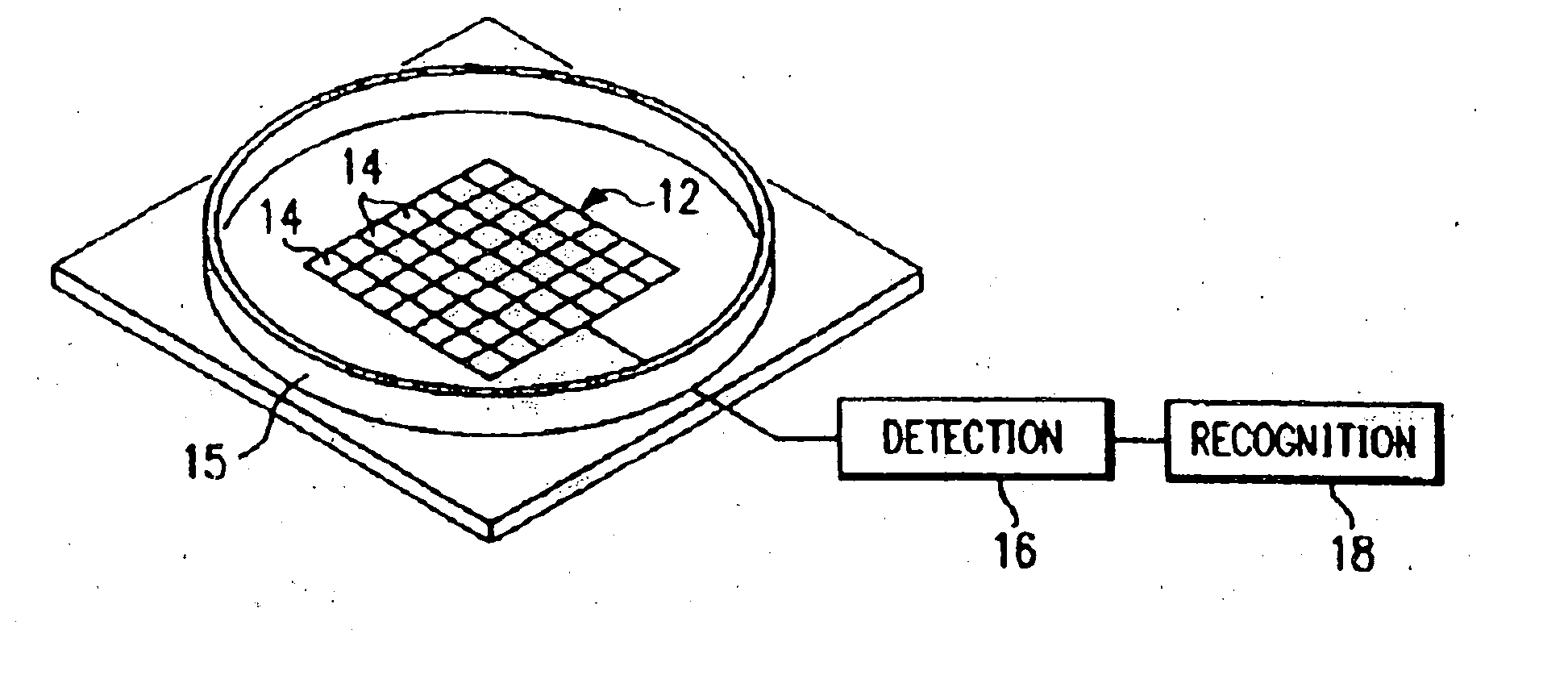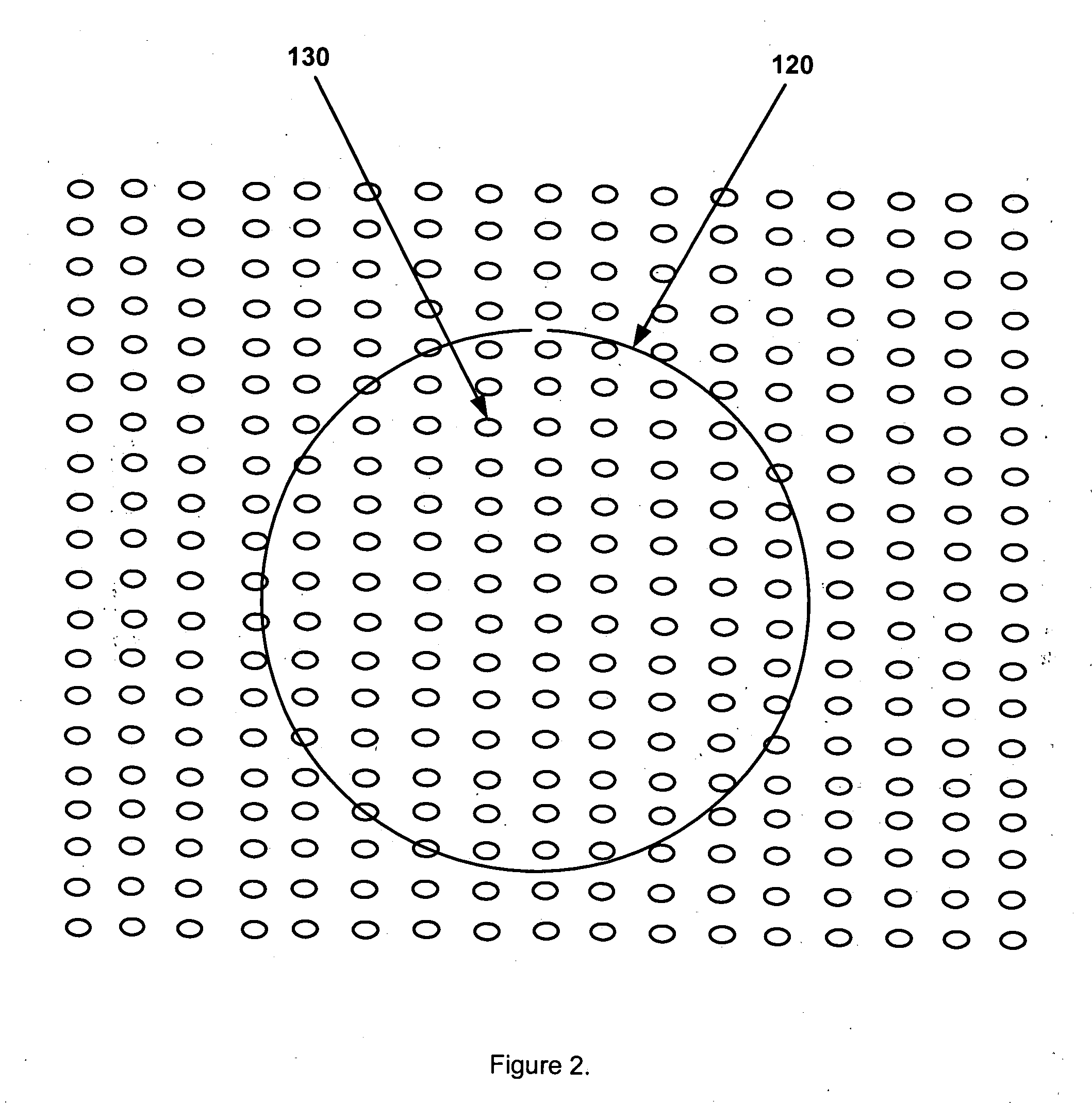Apparatus and method for identification of biomolecules, in particular nucleic acid sequences, proteins, and antigens and antibodies
a biomolecule and apparatus technology, applied in the field of apparatus and method for identification of biomolecules, can solve the problems of increasing production costs, failure of measurement system, and further complicated implementation of multiple sense sites
- Summary
- Abstract
- Description
- Claims
- Application Information
AI Technical Summary
Benefits of technology
Problems solved by technology
Method used
Image
Examples
Embodiment Construction
[0109] The present invention is useful in the detection of specific nucleotide sequences, proteins, antigens, or antibodies. Any biomolecular substance, which has a binding affinity for and will hybridize to another biomolecule, can be detected using this novel apparatus and method.
[0110] One part of the present invention is a new resistive sense site 130 to receive a probe DNA spot 120, as depicted in FIG. 2. As shown in FIG. 20, this novel sense site is produced using semiconductor substrate material 190 and comprises: (i) a planar semiconductor diode or unidirectional semiconductor device (for the sake of simplicity the diode element is not identified in the drawings as part of the sense site, for example FIG. 20, element 180; however, it is considered an integral and essential component of each sense site); (ii) a doped semiconductor region serving as the gap substrate 190; (iii) a pair of conductive traces with curved corners serving as sense site leads 170; (iv) a four sided ...
PUM
| Property | Measurement | Unit |
|---|---|---|
| concentration | aaaaa | aaaaa |
| pH | aaaaa | aaaaa |
| volume | aaaaa | aaaaa |
Abstract
Description
Claims
Application Information
 Login to View More
Login to View More - R&D
- Intellectual Property
- Life Sciences
- Materials
- Tech Scout
- Unparalleled Data Quality
- Higher Quality Content
- 60% Fewer Hallucinations
Browse by: Latest US Patents, China's latest patents, Technical Efficacy Thesaurus, Application Domain, Technology Topic, Popular Technical Reports.
© 2025 PatSnap. All rights reserved.Legal|Privacy policy|Modern Slavery Act Transparency Statement|Sitemap|About US| Contact US: help@patsnap.com



